Featured Photo: In the protected southwest corner of the lake, low light and the camera settings forced a high ISO and gave this image a serene, painted look. Some American Coots and a couple of hatch-year Barrow’s Goldeneye inhabit this scene.
On October 29, 2022, ten adventurers from Portland, Welches, Eugene, Glide, Bend, and Roseburg, joined me for a 6-hour bird and nature tour of beautiful Diamond Lake in the high Cascades of eastern Douglas County, Oregon. Diamond Lake sits at just over 5,000 ft elevation and spans about 3 miles north-to-south and 1 mile east-to-west, encompassing roughly 3,000 acres.
Some of us had breakfast at the Diamond Lake Lodge, then met the rest of the group at the marina. We loaded folding chairs, life jackets, and pads, and boarded one of the last patio boats on the lake. The rest had already been removed and stored for the winter. We started off on our excursion about 08:15, as the sunrise was beginning to light up Mount Bailey. The temperature was close to freezing, so some orange flotation pads, towels, and other things kept our buns warm on the cold plastic seats.
The views of Mount Thielsen and Mount Bailey were stunning from shore, but once on the water, the beauty of these snow-covered mountains was breathtaking.
The first few birds on north end of the lake were distantly scattered and represented an interesting variety of species. Even before getting on the boat, a pair of immature Snow Geese grazed on the grass and loitered around the marina as if they were domestic geese. Our first lone birds on the water were a Western Grebe and a first-year male Surf Scoter, widely separated from each other on the early morning water.
As we motored west, small numbers of Eared Grebes were present to the south, and we could see a loon in the distance to the west. As we approached the northwest corner of the lake, the one loon turned into four Common Loons in various immature and winter plumages. Nearby were an adult California Gull and immature Bonaparte’s Gull seemingly associating with each other. The Bonaparte’s Gull would spin around like a large phalarope, picking things from the water surface. Also in the area was a lone female-type Hooded Merganser that seemed to enjoy hanging out with two female-type Buffleheads. Everybody was getting along here in the northwest corner of the lake. Typically there are rafts of goldeneye and Bufflehead in this corner of the lake, but not today.
As we headed south along the west shore, birds were sparse, and the wind picked up a bit, giving us a bit of a chill. Some folks turned their chairs around to put their backs to the wind, which helped. In the meantime, Mount Thielsen continued giving us spectacular, ever-changing views, which always lifted and warmed our spirits.
We stopped at the pier at Thielsen View Campground for a potty break, short walk, and landbird search. Birds were not revealing themselves abundantly, but Steller’s Jay, Mountain Chickadee, Red Crossbill, and Red-breasted Nuthatch were detected, the latter teeing up on top of a true fir for a good view.
As we resumed our travel south, from Thielsen View Campground, bird numbers began to increase. First, we could see large groups of American Coot ahead. These often have other species within or nearby and today was no exception. Included in and near the coot flocks were large numbers of Lesser Scaup, good numbers of American Wigeon, and a few others such as Ruddy Duck. Of all species on the lake, Lesser Scaup have, in my experience, been the most skiddish and flighty of all. It is nearly impossible to get close views. In this case, perhaps they found some comfort among the coots, but they still didn’t stay still for long, as you can see.
We continued down to the southwest corner of the lake and spent some time there, noticing a significant reduction in wind. Here we finally saw our first Barrow’s Goldeneye that had been oddly absent earlier. One or two Great Blue Herons (I only saw one at a time) were present along this shallow end of the lake, mostly standing on logs. We saw a small grebe with a lot of white that we called a Horned Grebe in the field, but upon examining images of the bird, we were mistaken. Sometimes individual variation can fool us.
We slowly made our way east along the shallow south shore, past the entrance of Silent Creek and along the border of the South Marsh, an 80-acre wetland adjacent to Diamond Lake. Some trees grow along the border of the lake and marsh and these are favorite perches for Bald Eagles and other raptors. A couple Bald Eagles were present there this day. A Gadwall, some goldeneye, and a friendly California Gull were present along the way. At the pier at South Shore Day Use Area we moored the patio boat and a bunch of us took a short walk out the John Dellenback trail toward South Marsh, which was by now a nice shade of yellow-brown with bright yellow and reddish huckleberry plants along the edge.
After our short break from the water, we boarded the boat again and poked around the south shore and southeast corner of the lake where there were abundant waterfowl and really focused on seeing more of the adult Barrow’s Goldeneye. Here’s a short collection….
At about 12:45 or so, we decided to leave the south shore and head north. As we looked ahead, there were waterfowl as far as we could see. We scanned through flocks of thousands upon thousands of waterfowl. Close by were more Barrow’s Goldeneye, entire fleets of American Coots, smatterings of other species such as Northern Shoveler, American Wigeon, Bufflehead, and Eared Grebes, and far ahead were huge flocks of Lesser Scaup.
As we continued north, the waterfowl flocks thinned and we wandered more into the center of the lake where there were many scattered groups of Eared Grebes. Continuing north, birds were more scattered, but nonetheless interesting. We came upon a group of 5 Surf Scoters, including an amazingly colorful adult male! Shortly after was a 6th Surf Scoter, as well as a Common Loon who engaged us in a challenging game of Marco Polo.
We were now pretty close to the Diamond Lake Resort. Mount Thielsen gave us some final capstone views. And the very tame immature Snow Geese welcomed us back to the marina.

After unloading at the marina and a few snacks, some of us caravaned over to the Diamond Lake sewage ponds. A modest number of ducks were present, and the sound of pecking led us to a Hairy Woodpecker and Black-backed Woodpecker foraging in the remains of the Thielsen Burn adjacent to the ponds.
What a great day with wonderful weather, a tremendous number of birds, beautiful views, and beautiful people!
My eBird checklists for this day:
Diamond Lake
DL Sewage Ponds
Previous posts and photos from Diamond Lake:
September 17, 2022
October 18, 2015
November 2, 2014
In quick comparison to previous trips, this day the Barrow’s Goldeneye were concentrated at the south end, whereas in past trips there have been some farther north along both shores and especially to the northwest corner. Past trips have had a few more Western Grebes and usually one or two Horned Grebes and a Common Goldeneye, but not his year. This trip astonishingly had no Common Mergansers which seemed very odd. Although large numbers of American Coot are normal, this year had even more than usual. Change is constant. 🙂
Hope to see you on the lake next year!










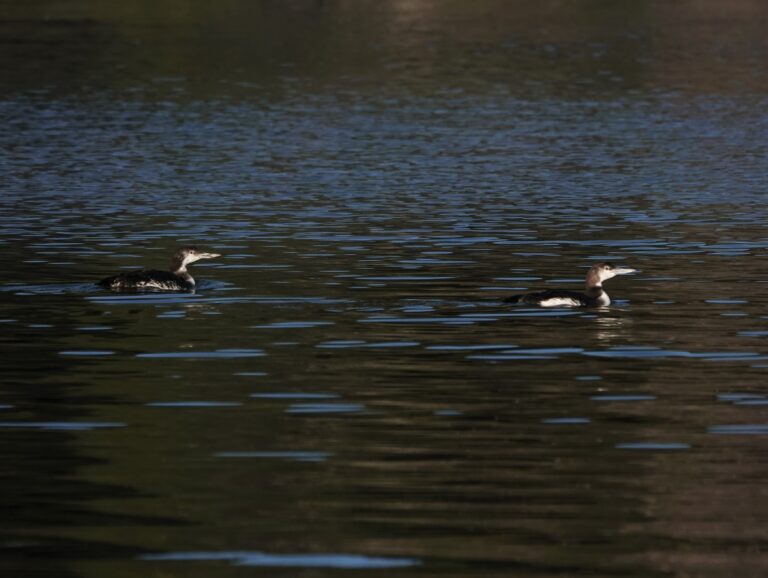



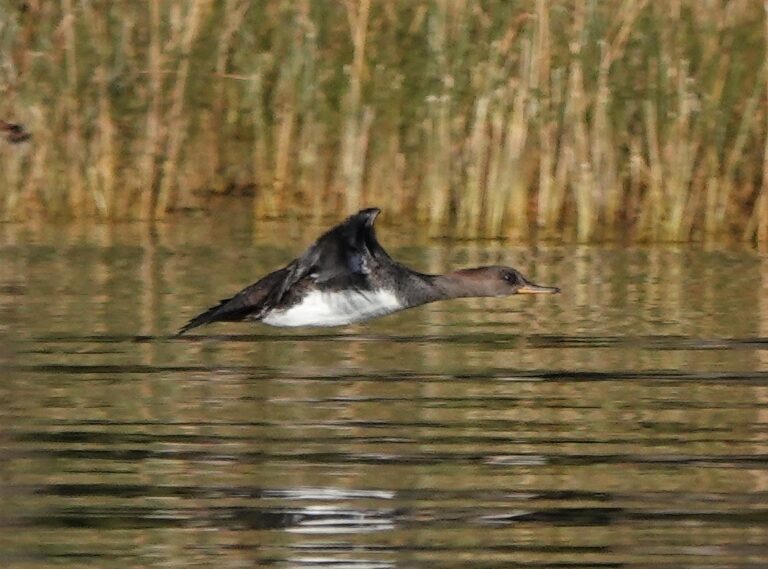













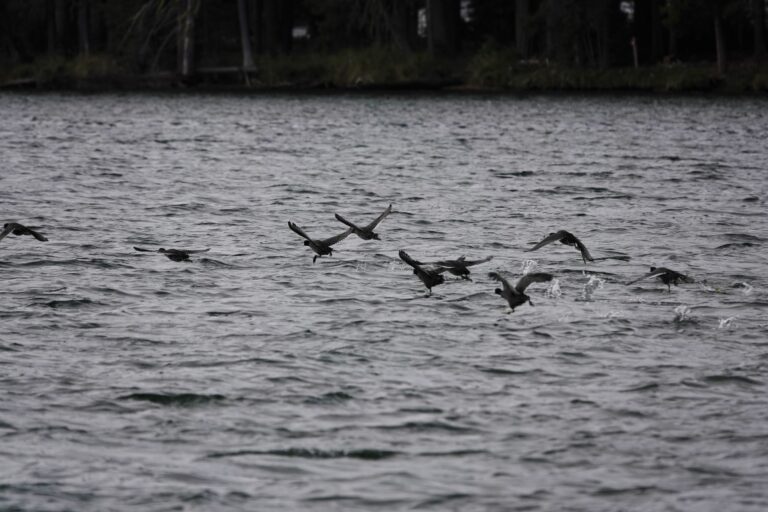
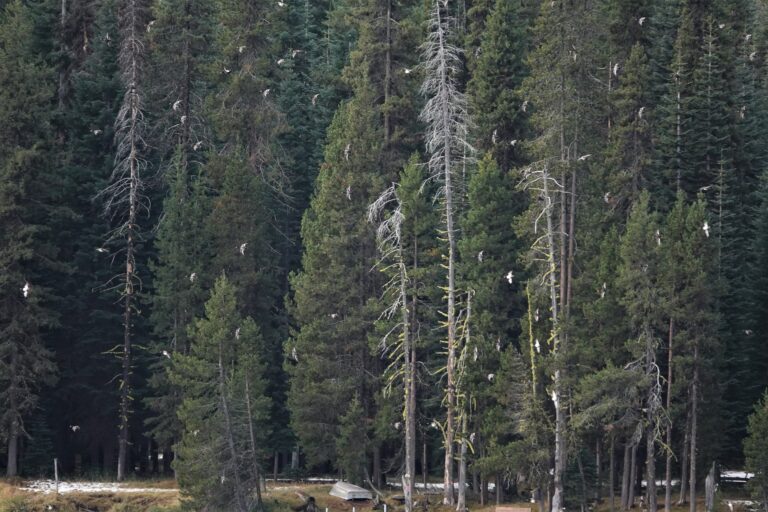







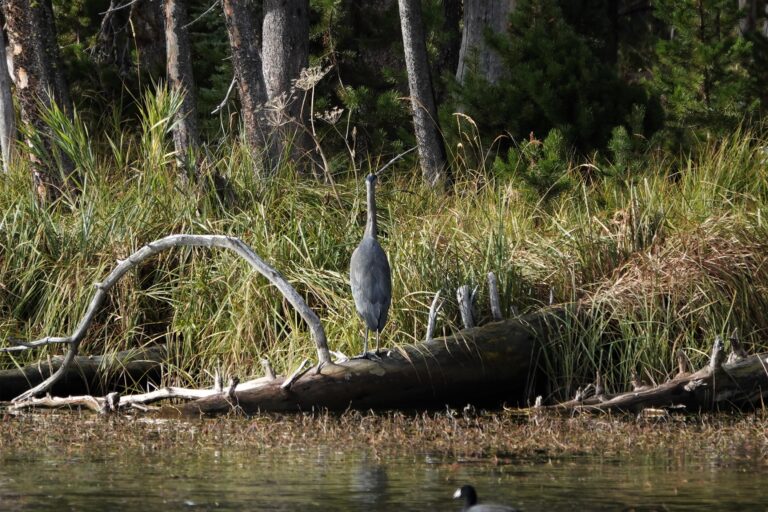










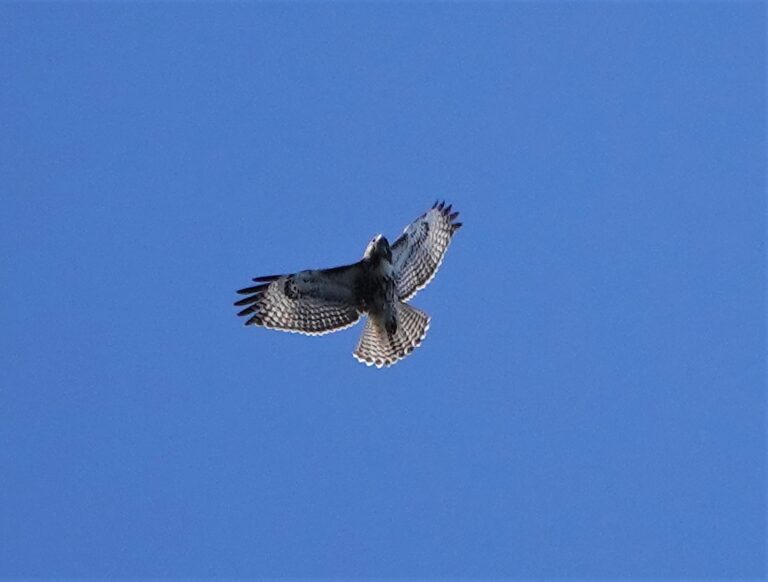


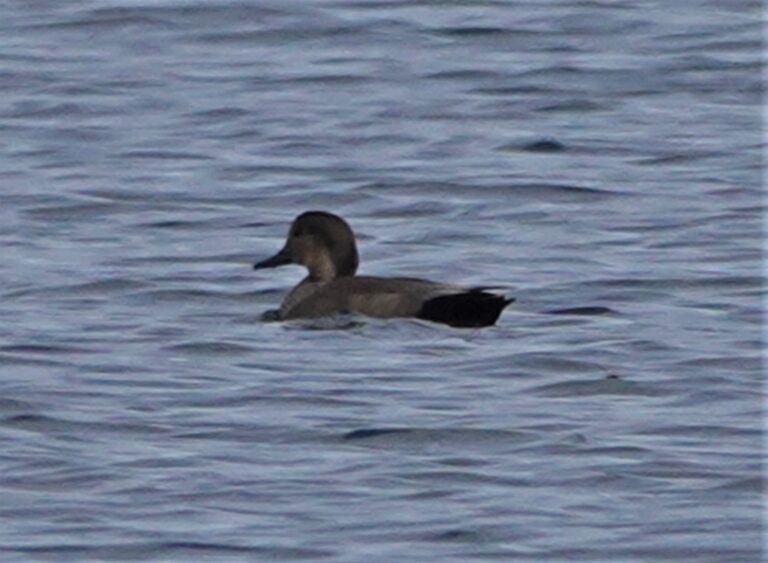


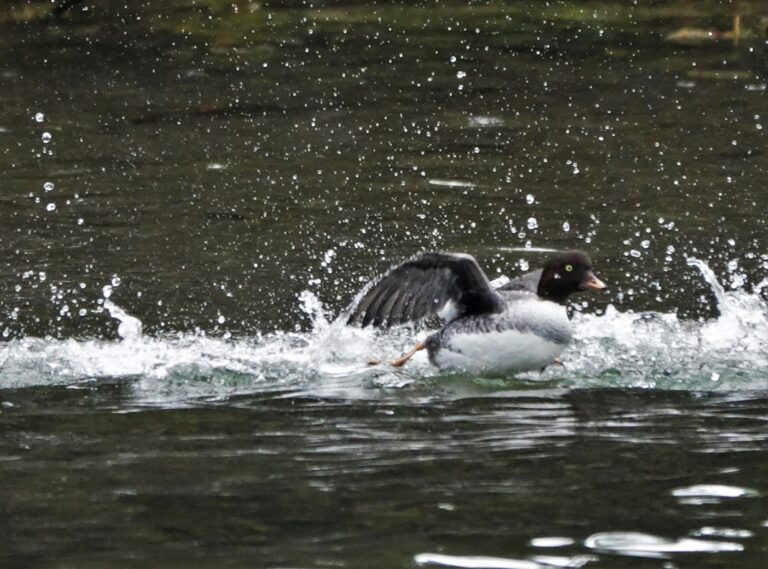





























This Post Has 11 Comments
Beautiful photos, nice commentary.
Oops, Surf Scoter…..
Wonderful photos, Matt; thank you for sharing them.
I enjoyed the beautiful male Scaup & the ponds’ Blackbacked Woodpecker!
Great commentary, Matt! I’m glad you had a good group and lots of bird sightings.
Thank you for sharing the pics and details. Looks like it was a wonderful birding adventure!
Matt, thanks for putting together this charming and informative story about your trip to Diamond Lake. It’s the next best thing to being there. You managed to get good photos of most of the birds you described. Jim Arneson and I visited the sewage ponds on October 11 this year and a forest worker there showed us around the ponds. He said the lagoons farthest west (toward Lake Creek) often have the most birds, and they were loaded with at least 100 American Wigeon. In the future, with no way to enter the east gate, I’ll try walking around the fenced area to see what’s visible from the west side. Thanks again for sharing your trip with the rest of us. Mikeal
Thank you for sharing this.
Thanks for sharing your Diamond Lake birding boat trip, Matt! A fun and interesting report with great photos!
Wow, thanks for taking the rest of us on this trip! Very enjoyable reporting and photos 🙂
Great summary of a great trip. Thanks for taking us on a great trip around the lake Matt
Awesome! That was a really fun trip!